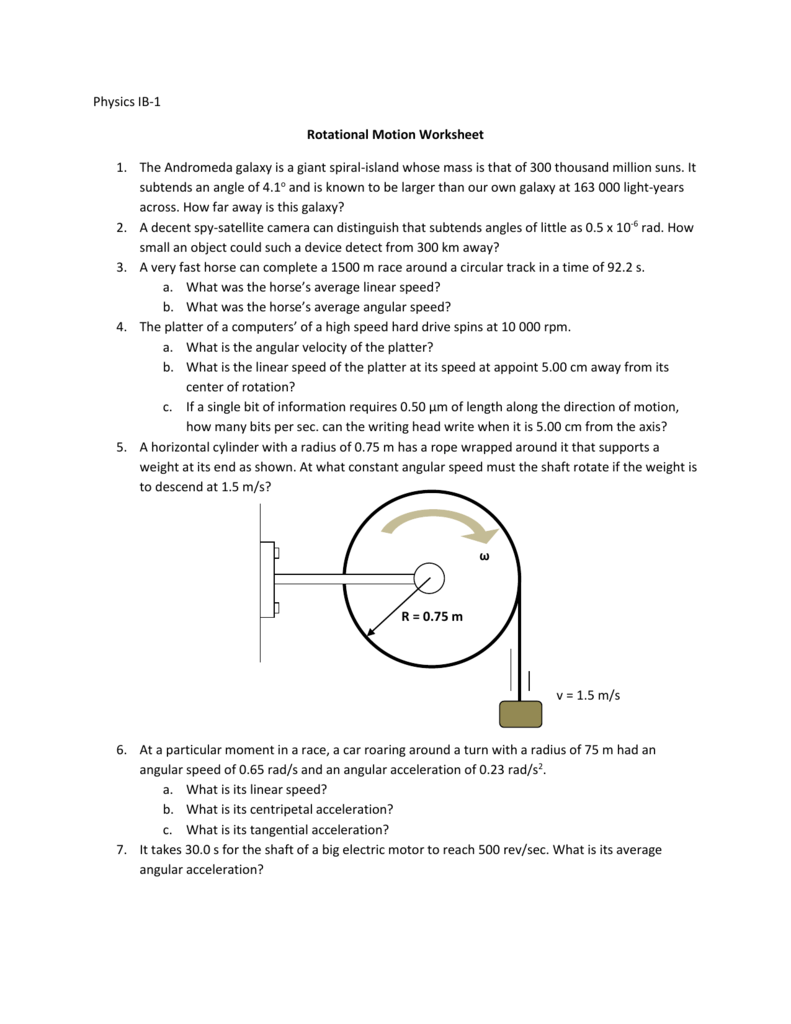
Rotational Motion Physics Study Guide Answers

Book Descriptions:We have made it easy for you to find a PDF Ebooks without any digging. And by having access to our ebooks online or by storing it on your computer, you have convenient answers with Conceptual Physics Practice Page Rotational Motion Answers. To get started finding Conceptual Physics Practice Page Rotational Motion Answers, you are right to find our website which has a comprehensive collection of manuals listed.Our library is the biggest of these that have literally hundreds of thousands of different products represented.
Figure 10.1 The mention of a tornado conjures up images of raw destructive power. Tornadoes blow houses away as if they were made of paper and have been known to pierce tree trunks with pieces of straw. They descend from clouds in funnel-like shapes that spin violently, particularly at the bottom where they are most narrow, producing winds as high as 500 km/h. (credit: Daphne Zaras, U.S.
Rotational Kinematics. Connections Between Linear. Rotational Quantities.Rolling Motion. Rotational Kinetic Energy and the. Moment of Inertia.
Volvo hu-615 radio says off. National Oceanic and Atmospheric Administration)Why do tornadoes spin at all? And why do tornados spin so rapidly?
The answer is that air masses that produce tornadoes are themselves rotating, and when the radii of the air masses decrease, their rate of rotation increases. An ice skater increases her spin in an exactly analogous manner as seen in. The skater starts her rotation with outstretched limbs and increases her spin by pulling them in toward her body. The same physics describes the exhilarating spin of a skater and the wrenching force of a tornado.Clearly, force, energy, and power are associated with rotational motion. These and other aspects of rotational motion are covered in this chapter. We shall see that all important aspects of rotational motion either have already been defined for linear motion or have exact analogs in linear motion. First, we look at angular acceleration—the rotational analog of linear acceleration.
Want to cite, share, or modify this book? This book is Creative Commons Attribution License4.0 and you must attribute OpenStax.Attribution information.If you are redistributing all or part of this book in a print format,then you must include on every physical page the following attribution:Access for free at you are redistributing all or part of this book in a digital format,then you must include on every digital page view the following attribution:Access for free atCitation information.Use the information below to generate a citation. We recommend using acitation tool such as.Authors: Paul Peter Urone, Roger Hinrichs.Publisher/website: OpenStax.Book title: College Physics.Publication date: Jun 21, 2012.Location: Houston, Texas.Book URL:.Section URL:© Jan 16, 2020 OpenStax.
Textbook content produced by OpenStax is licensed under aCreative Commons Attribution License 4.0 license. The OpenStax name, OpenStax logo, OpenStax bookcovers, OpenStax CNX name, and OpenStax CNX logo are not subject to the Creative Commons license and maynot be reproduced without the prior and express written consent of Rice University.